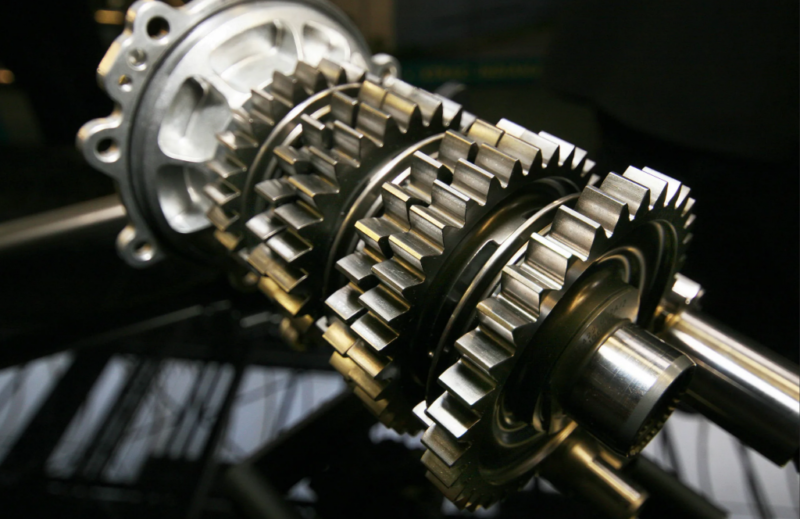Transmission Troubles: What to Look Out For
When it comes to the 2006 Chevy Trailblazer, transmission issues can be a real headache for owners. If you’re driving this SUV, it’s crucial to be aware of the common problems and symptoms that can arise. Ignoring these signs can lead to costly repairs and even safety hazards on the road. Let’s break down what you need to know.
Common Types of Transmission Problems
- Slipping Gears: One of the most frustrating issues is when the transmission slips out of gear unexpectedly. This can happen during acceleration or cruising, leaving you feeling like you have no control over your vehicle.
- Delayed Engagement: If you notice a significant delay when shifting from park to drive or reverse, your transmission might be on the fritz. This can be alarming, especially if you’re trying to merge into traffic.
- Unusual Noises: Grinding, whining, or clunking noises when shifting gears are red flags. These sounds often indicate internal damage or wear and tear that needs immediate attention.
- Fluid Leaks: Transmission fluid is vital for smooth operation. If you spot red or brown fluid pooling under your vehicle, it’s a sign of a leak that can lead to severe transmission failure if not addressed.
- Warning Lights: The check engine light or transmission warning light on your dashboard can indicate a problem. Don’t ignore these lights; they’re your vehicle’s way of telling you something’s wrong.
Symptoms to Watch For
- Shaking or Shuddering: If you feel your Trailblazer shaking or shuddering during gear changes, it’s a symptom of a transmission issue that shouldn’t be overlooked.
- Overheating: A hot transmission can lead to serious damage. If you notice your transmission overheating, it’s crucial to pull over and let it cool down.
- Inability to Shift: If you find it difficult to shift gears, or if the gear lever feels stuck, this could indicate a serious problem with the transmission system.
- Burning Smell: A burnt smell coming from your vehicle can indicate overheating transmission fluid. This is a sign that your transmission is in trouble and needs immediate attention.
Consequences of Ignoring Transmission Issues
Ignoring transmission problems can lead to a cascade of issues that can affect not just your vehicle’s performance but also your safety on the road. Here are some potential consequences:
- Complete Transmission Failure: If you continue to drive with a slipping or malfunctioning transmission, you risk complete failure, which can leave you stranded and facing a hefty repair bill.
- Increased Repair Costs: What might start as a minor issue can escalate into a major repair if not addressed promptly. Early intervention can save you money in the long run.
- Safety Hazards: A malfunctioning transmission can lead to dangerous situations, especially if it affects your ability to accelerate or decelerate properly. This can put you and others on the road at risk.
- Decreased Resale Value: A vehicle with known transmission issues will have a significantly lower resale value. If you plan to sell or trade in your Trailblazer, you’ll want to address these problems first.

Stay vigilant and keep an eye out for these signs. Your Trailblazer deserves the best care, and being proactive about transmission issues can save you time, money, and headaches down the road.
Understanding the Transmission Issues in Your Chevy Trailblazer
If you own a 2006 Chevy Trailblazer, you might have experienced some frustrating transmission issues. Knowing the causes behind these problems can help you understand what’s going on under the hood and how to address them. Let’s dive into the common causes of transmission problems and explore potential solutions.
Common Causes of Transmission Problems
Transmission issues can arise from various factors, and understanding these can help you diagnose the problem early. Here are some of the most common causes:
- Low Transmission Fluid: One of the primary culprits behind transmission problems is low fluid levels. Transmission fluid lubricates and cools the transmission components. If the fluid is low, it can lead to overheating and increased wear.
- Fluid Contamination: Over time, transmission fluid can become contaminated with dirt, debris, and metal shavings. This contamination can hinder the fluid’s ability to lubricate and protect the transmission, leading to premature failure.
- Worn Out Components: Like any mechanical system, the components within the transmission can wear out over time. Clutches, seals, and bands can degrade, causing slipping, delayed engagement, and other issues.
- Electrical Issues: Modern transmissions rely on electronic controls to function correctly. Faulty sensors or wiring can lead to erratic shifting or failure to shift altogether.
- Overheating: Excessive heat can damage transmission components. This can be caused by low fluid levels, towing heavy loads, or a malfunctioning cooling system.
Potential Solutions to Transmission Problems
While diagnosing the issue is the first step, knowing how to address these problems is equally important. Here’s a breakdown of potential solutions:
